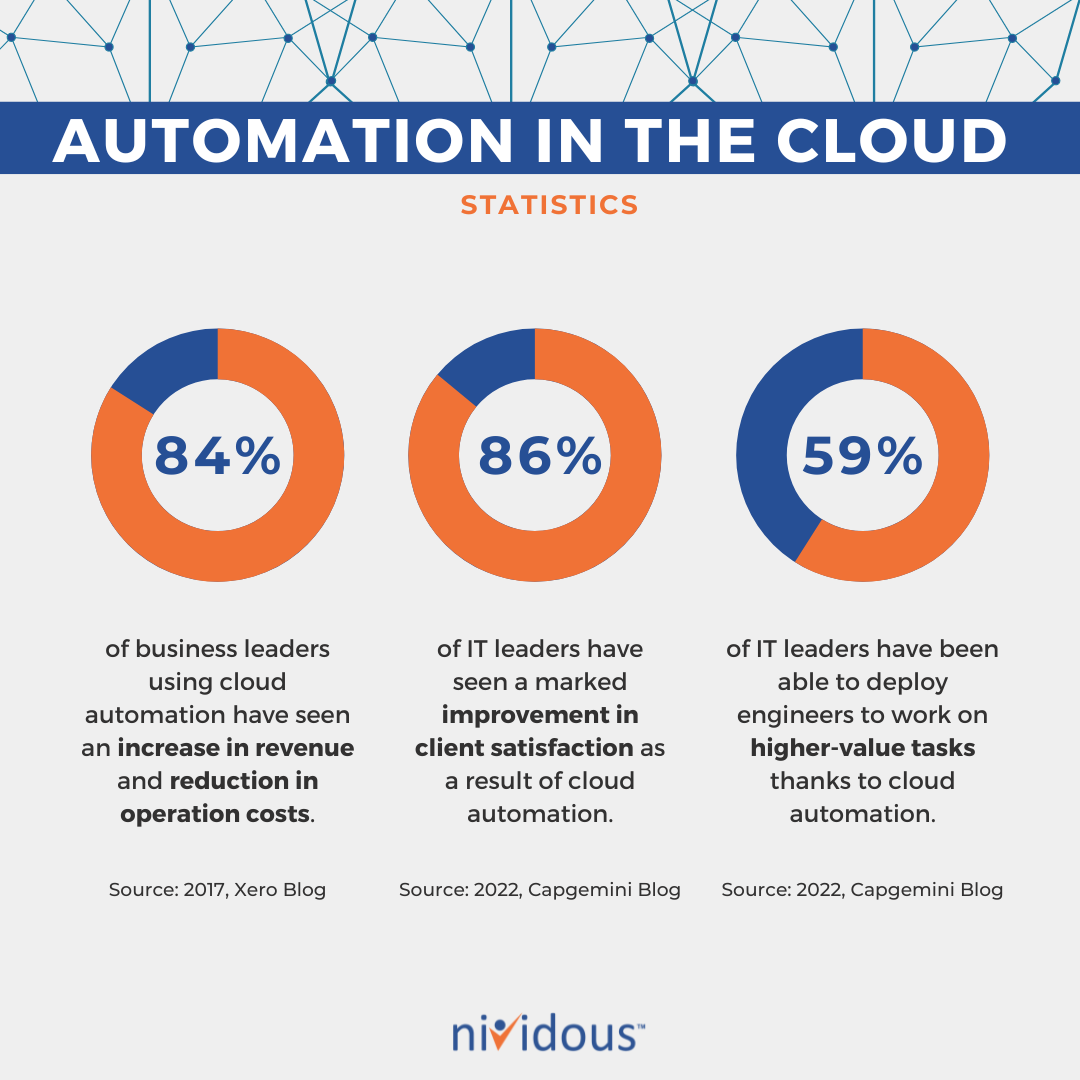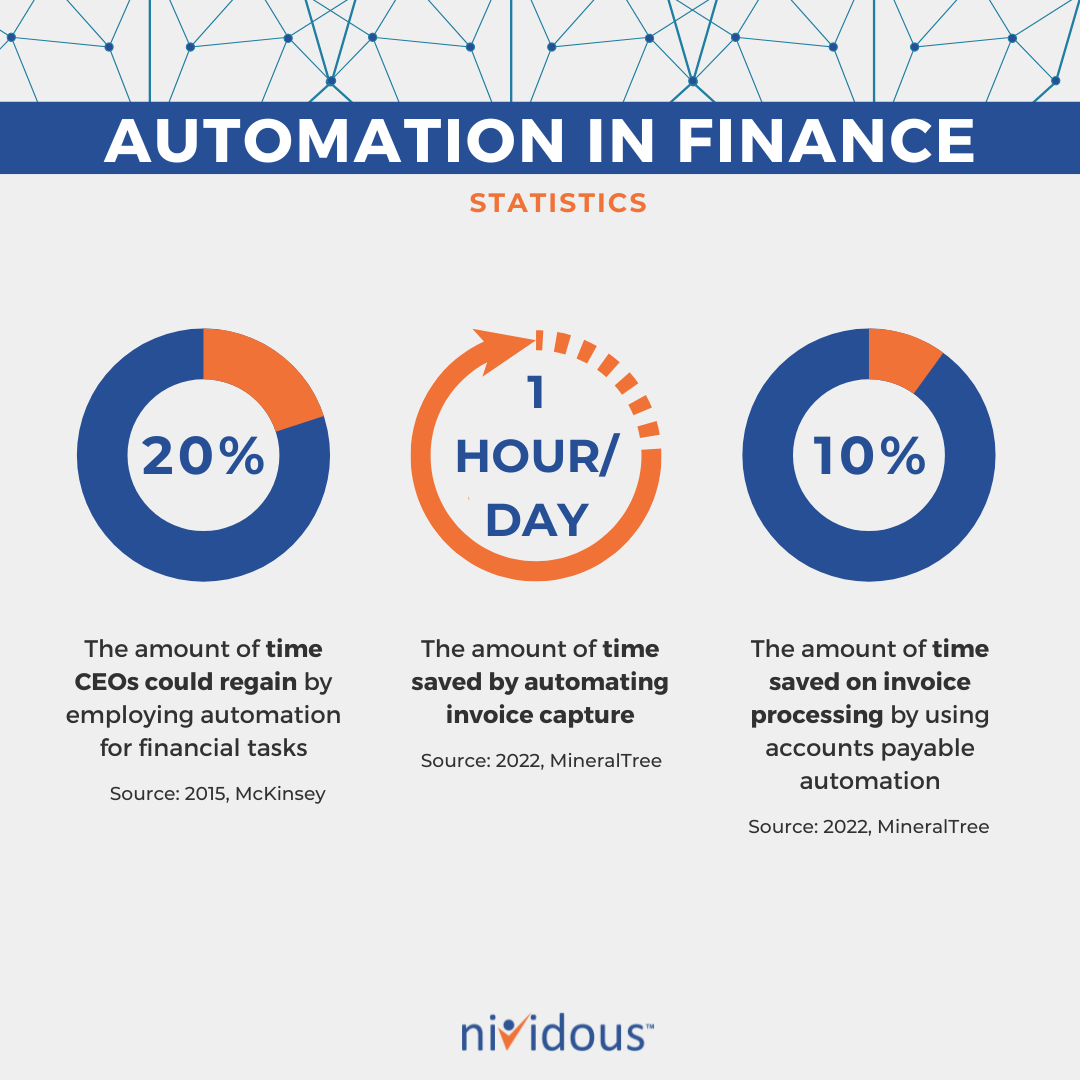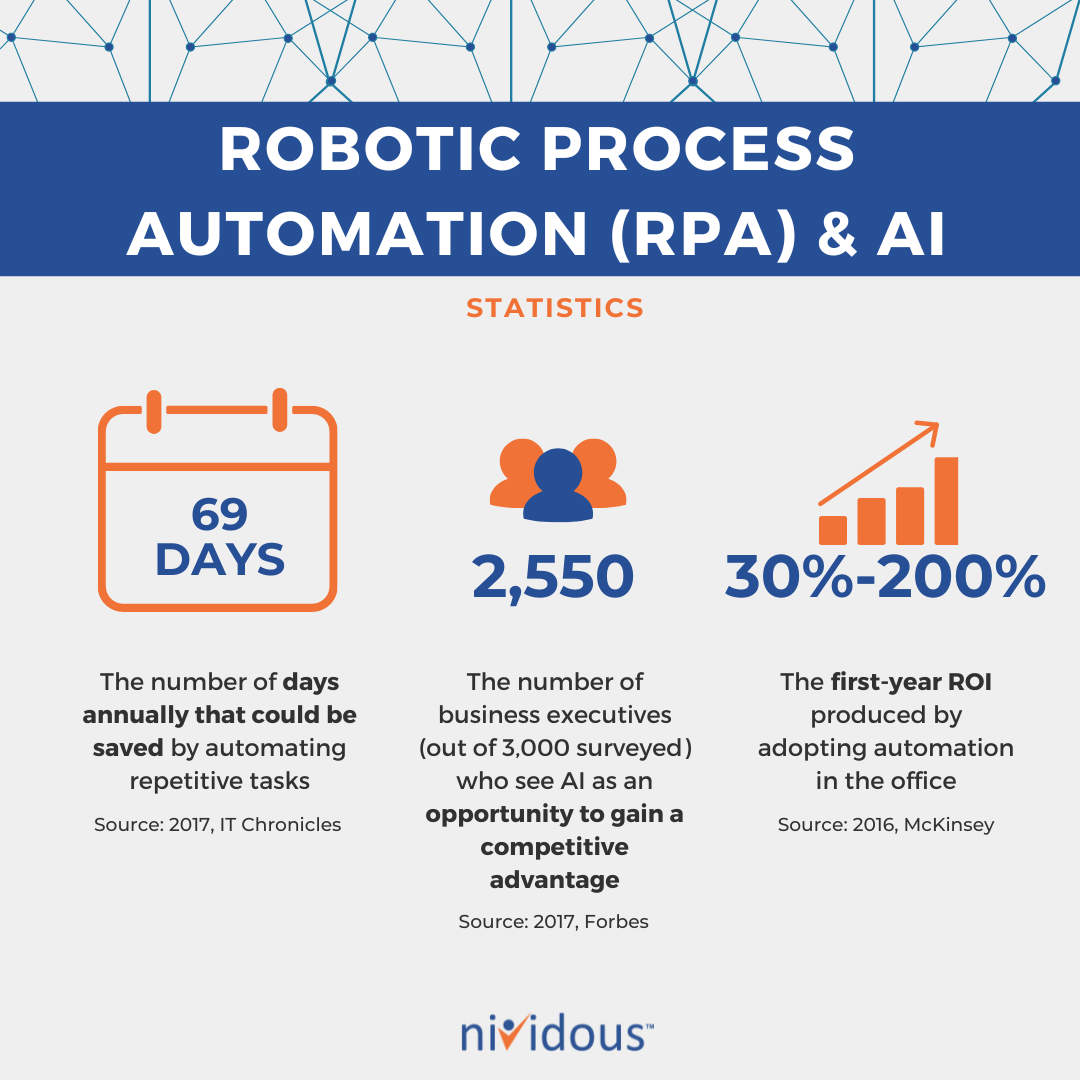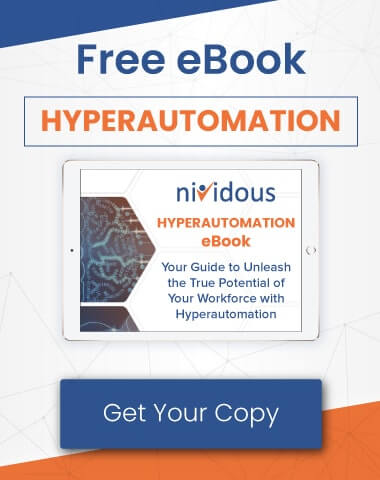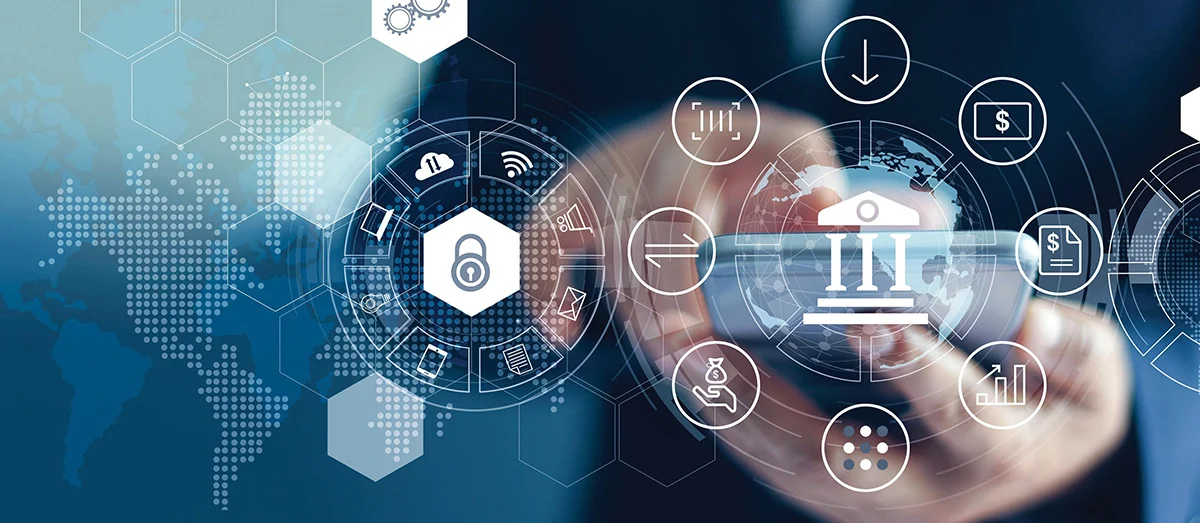By now, automation has been adopted to some extent by at least 67% of companies worldwide. But it is a rapidly evolving tool, and businesses are still learning how to use it to its fullest potential.
The biggest challenge to implementing automation, according to a recent McKinsey study, surprisingly isn’t related to financing—it’s understanding where and how to best deploy it. Still, seventy percent of respondents say their organizations are at least piloting automation technologies in one or more business units or functions.
At Nividous, we’ve helped numerous organizations, across all industries, implement automation in ways that have dramatically improved their operations. (You can read about some of those stories here.) But if you’re still researching how automation is being used, take a look at the automation statistics below. They’ll give you an idea as to how other companies in your industry—or area of business—are applying it to good effect.
- As of May 2019, more than 70% of advertisers were using Google automated bidding strategies. (2019, Google)
- Advertising automation can save businesses $130,000 a year in costs. (2022, ContactPigeon)
- Programmatic advertising accounted for over 80% of digital display marketing in the US. (2018, AppNexus)
- By the end of 2020, over 90% of mobile display ads will be negotiated automatically using programmatic ads. (2018, AppNexus)
- In 2016, only 32% of display ads were automated; that figure jumped to 72% in 2019. (2021, Semrush)
Looking for guidance on how automation could help solve some of your biggest operational challenges?
Contact us at Nividous—we can help!
- The agricultural robot market is expected to grow at a rate of 34.5% between 2020 and 2025. (2021, MarketsandMarkets)
- The market for automated farming equipment is expected to rise to $23.06 billion by 2028 (2019, MarketResearch.com)
- More than 35,000 robotic milking systems are currently in use around the world. (2019, DAIReXNET)
- Users of robotic milking systems (RMS) have saved up to 29% in labor costs. (2019, DAIReXNET)
- Farms using robotic milking systems averaged 2.2 million lbs. of milk per full-time worker compared to 1.5 million lbs. for similar-sized herds’ milking in parlors. (2019, DAIReXNET)
- The labor requirement was 29% lower on RMS farms compared to non-RMS farms, resulting in more milk production and income per worker. (2019, DAIReXNET)
- U.S. farms are consistently harvesting in excess of 6,000 lbs. of milk per robot daily. (2019, DAIReXNET)
- 84% of business leaders using cloud automation have seen an increase in revenue and reduction in operation costs. (2017, Xero Blog)
- Year-on-year growth for businesses using cloud automation is estimated at 15%. (2017, Xero Blog)
- The market for cloud automation is forecast to grow by $103.9 billion by 2025. (2019, Business Wire)
- 84% of IT companies are happy with the increased agility made possible by cloud automation. (2022, Dell Inc.)
- 81% of IT companies feel that they have been able to improve innovation by using cloud automation. (2022, Foundry)
- 86% of IT leaders have seen a marked improvement in client satisfaction as a result of cloud automation. (2022, Capgemini)
- 59% of IT leaders have been able to deploy engineers to work on higher-value tasks thanks to cloud automation. (2022, Capgemini)
- Robotic automation can cut down phishing attack detection and response times by as much as 70%. (2021, EY)
- By 2017, 44% of companies were using AI to detect and deter cyber intrusions. (2022, Windward Studios)
- 68% of major global companies are planning to increase spending on automated cybersecurity solutions. (2020, LearnBonds)
- Investing in automated cybersecurity could increase global revenue opportunities by $5.2 trillion. (2021, Accenture)
- Approximately 55% of major organizations will boost their investments in automation solutions. (2022, LearnBonds)
- 51% of enterprises surveyed in 2019 were depending primarily on AI to detect cyber threats. (2020, Capgemini)
- 80% of telecom executives surveyed indicated that AI was their main hope for combating cyber attacks now and in the future. (2020, Capgemini)
- 84% of IT professionals in America and Japan are convinced they face the threat of criminals using AI to launch attacks. (2017, Webroot)
- Almost 50% of eCommerce companies use marketing automation software to attract more shoppers. (2020, ClickZ)
- 40% of B2B companies plan to adopt marketing automation technology. (2022, Emailmonday)
- By 2025, 95% of interactions between customers and retailers will be handled by automated systems. (2022, FinanceDigest)
- 73% of consumers say they are fine with automated customer care as long as it improves service. (2022, Pega)
- Customers who receive automated emails about incomplete purchases are 2.4 times more likely to complete the purchase. (2022, Experian)
- Shipments of collaborative robots to warehouses worldwide are expected to cross 47,000 by 2026 at a CAGR of over 37%. (2022. Robotics & Automation News)
- Automated warehouses are 40% more likely to ship orders within one day of the order being made. (2010, Robotics Business Review)
- Over 269 billion emails are sent globally on a daily basis equating to about 2.4 million emails per second. (2014, Radicati)
- Over 49% of businesses use some form of email automation. (2022, HubSpot)
- Automating email and other repetitive tasks is worth nearly $273/hour. (2022, HubSpot)
- Companies that use automated marketing software to send out emails receive twice the number of leads and 58% more conversions. (2017, Moz)
- Businesses using automated follow up emails can improve their response rate by 250%. (2016, Entrepreneur)
- Adding automated emails to the lead nurturing process can improve revenue by 10%. (2016, Entrepreneur)
- Emails sent as part of triggered campaigns account for more than 75% of B2B revenue from emails. (2022, DMA)
- Email marketing technology is used by 82% of companies. (2015, Ascend2)
- 14% of marketers combine segmentation and automation to improve personalization. (2018, GetResponse)
- Email marketing automation has a significant impact on cart abandonment emails: The average open rate is over 30%; the conversion rate can reach as much as 20%; and the sales rate can reach 10.7%. (2018, Marketinghub)
- The same is true for browse abandonment emails: With email marketing automation, the browse abandonment email open rate reaches almost 40%; the average click-through rate is 10.87%; and the average revenue per recipient is $1.35. (2018, Marketinghub)
- With email marketing automation, the product recommendation email open rate is as high as 10%. (2017, ClearVoice)
- The conversion rate for automated product recommendation emails can reach 3%. (2017, ClearVoice)
- Automated price drop reminder emails have an average open rate of 38.33%. (2017, ContactPigeon)
- Automated cross-selling emails can increase sales by as much as 28%. (2022, SaleCycle)
- 20% of the time CEOs spend on financial tasks could be eliminated with automation. (2015, McKinsey)
- In 2017, McKinsey forecast a second wave of automation and AI that will see machines handling between 10% and 25% of banking tasks. (2017, McKinsey)
- Chatbots will have generated cost savings of over $8 billion per year as of 2022. (2017, Juniper Research Ltd)
- In the banking sector, the success rate of bot interactions with humans was expected to reach 90% as of 2022. (2017, Juniper Research Ltd)
- ICICI Bank reduced its time spent addressing complaints about ATM cash disbursal from 12 hours to 4 hours a day with automation. (2020, Windward Studios)
- ICICI deployed over 750 robots to handle daily transactions and has recorded 100% accuracy. (2020, Windward Studios)
- Implementing accounts payable automation can improve invoice processing time by 10%. (2022, MineralTree)
- Automating invoice capture saves 1 hour a day. (2022, MineralTree)
- Accounts payable automation pays for itself within 6 to 18 months. (2018, MHC Automation)
- 26% of an organization’s automations, on average, fall under the finance umbrella. (2022, Workato)
- Automating returns and refunds has ballooned by 335% year over year. (2022, Workato)
- The order-to-cash process accounts for 57% of finance automations. (2022, Workato)
- Finance professionals are building 39% of their department’s automations. (2022, Workato)
- 80% of finance leaders have implemented or are planning to implement RPA. (2022, AIMultiple)
- The global healthcare automation market is expected to generate around $63,596 million by 2026. (2019, Zion Market Research)
- The global healthcare automation market report estimates 8.41% growth within seven years. (2019, Zion Market Research)
- In the immediate future, healthcare and pharmaceuticals are anticipated to be the largest industries in the business workflow automation market. In combination, these industries will generate revenue of over $900 million by the end of 2026. (2018, GlobeNewswire, Inc.)
- The global medical robotics market will hit $20 billion by 2023 as some surgical procedures become fully automated. (2013, McKinsey)
- The healthcare industry (including pharmaceutical companies) could save as much as $100 billion by applying AI and big data strategies. (2013, McKinsey)
- The number of AI-powered chatbot interactions in healthcare is expected to exceed 2.8 billion annually by 2023, up from an estimated 21 million in 2018. (2018, Juniper Research)
- The U.S. is expected to save $150 billion in the healthcare economy by 2026 through the application of AI in the health sector. (2018, The Enterprisers Project)
- 43% of HR professionals are optimistic about the introduction of automation to their industry. (2017, Jobvite)
- 42% of recruiters do not think automation will affect their job in any way. (2017, Jobvite)
- 14% of headhunters are afraid of being replaced by automation technology in their workplace. (2018, LinkedIn)
- 1.7 million jobs have already been lost to automation since 2000. (2022, Oxford Economics)
- 72% of HR officers believe the way they recruit will have to change as automation becomes more prevalent. (2022, Oxford Economics)
- 67% of recruiters believe HR automation will save or is saving time in the recruitment process. (2018, IQ PARTNERS Inc.)
- 43% feel automation in HR removes human bias. (2018, IQ PARTNERS Inc.)
- Automation is being used by 20% of companies to eliminate bias and support diversity recruitment. (2019, HubSpot)
- In 2019, 75% of HR professionals did not have the confidence to effectively use automation to improve the recruitment process. (2019, HubSpot)
- By 2030, the United States is forecast to see 46% of its insurance claims processing jobs automated. (2022, Statista)
- Quote generation time for insurance agents in California was cut from 14 days to 4 minutes using automation. (2020, Capgemini)
- By 2018, 30% of insurers were already considering using robotic process automation for the claims review process. (2022, Statista)
- In 2017, Deloitte predicted the loss of 22.7 million insurance jobs in the U.S. as a result of automation. (2017, Deloitte Development LLC)
- AI-augmented automation will be adopted by 40% of large enterprise infrastructure & operation (I&O) teams by 2023. (2019, Gartner)
- The number of automation architects within enterprises is forecast to rise 70% by 2025, up from 20% in 2020. (2022, Advanced Systems Concepts, Inc.)
- By 2023, about 20% of IT specialists will be affected by AI-enabled automation used for data management. (2022, Advanced Systems Concepts, Inc.)
- By 2024, organizations will realize a 30% reduction in operation costs as a result of implementing hyper-automation. (2022, Advanced Systems Concepts, Inc.)
- The world can save 749 billion working hours by automating 64% of manufacturing tasks. (2017, McKinsey)
- Seven out of 10 workers believe adopting automation in their organization will create better opportunities for them in higher-skilled jobs. (2017, McKinsey)
- Twenty million manufacturing jobs will be lost to automation by 2030. (2019, Oxford Economics)
- The main reason 57% of employers want to automate is to improve the productivity of their workforce. (2018, APPG AI)
- Only 24% of employers say that reducing operating costs is the main driver for adopting automation. (2018, APPG AI)
- The use of automation in three key industries including manufacturing will contribute $15.7 trillion to the global economy by 2030. (2022, PwC)
- 67% of marketing leaders are utilizing automation platforms in one way or another. (2021, HubSpot)
- 59% of Fortune 500 companies are using marketing automation, and that number is steadily on the rise. (2014, ClickZ)
- 61% of respondents are not using marketing automation at all. (2015, TFM&A)
- 27% of companies say they still consider themselves “new” to marketing automation. (2022, Invesp)
- Almost 50% of organizations started using their platform for the first time within the last four years. (2021, Demand Spring)
- With an annual growth rate of 14%, marketing automation spending will exceed $25 billion by 2023. (2018, Forrester Research, Inc.)
- The U.S. marketing automation software industry was valued at an estimated $12.3B in 2022. (2019, SharpSpring)
- 91% of users say marketing automation is “very important” to the overall success of their online marketing activities. (2022, Invesp)
- 63% of marketers plan to increase their marketing automation budget this year. (2022, Invesp)
- 80% of marketing automation users saw an increase in the number of leads using marketing automation software. (2022, Invesp)
- Using marketing automation software, 77% of users saw an increase in conversions. (2022, Invesp)
- 60% of the people who use marketing automation improved the quality of leads generated. (2012, FISION)
- The people who use marketing automation to improve the quality of leads report three times more leads generated every month. (2012, FISION)
- 58% of industry leaders using marketing automation say that conversion rate and revenue generated are the most useful metrics to measure. (2022, Invesp)
- Automating omnichannel marketing is likely to create a customer retention rate of 90%. (2019, Omnisend)
- Engagement and purchase rates increase by 250% using omnichannel automation. (2019, Omnisend)
- Customers will manage 85% of their relationships with the enterprise without interacting with a human. (2018, Gartner)
- B2B top performers are 20% more likely than average performers to use marketing automation technology. (2017, Act-On)
- Of the top B2B performers, 69% use marketing automation for customer acquisition and 50% for customer retention. (2017, Act-On)
- 22% of marketers aren’t confident they can stay up to date with marketing automation. (2015, B2B Marketing)
- 74% of marketers surveyed agreed that the main reason to use automation software is to save time. (2022, Upland Software, Inc.)
- The most important strategic goals of marketing automation strategy are: increase lead generation, 61%; lead nurturing, 57%; increase sales revenue, 47%; improve customer engagement, 36%; improve marketing productivity, 29%; improve campaign measurability, 28%; improve campaign targeting, 22%. (2022, Invesp)
- Nearly 70% of the respondents felt that improved targeting of messages is the most important benefit of using marketing automation. (2017, Liana Technologies)
- 54% of B2B marketers use marketing automation software to assist them with their content marketing efforts. (2019, Content Marketing Institute)
- 75% of B2B marketers say marketing automation software provides better insight into how content is performing. (2019, Content Marketing Institute)
- A third of agencies don’t pass martech costs back to clients at all; this number rises to 50% amongst small agencies. (2018, EmailMonday)
- 33% of email marketing campaigns are automated. (2019, DMA UK)
- PR outreach and brand promotion are seen as the least suitable digital marketing elements for automation, with only 22% of respondents indicating they find it a good match. (2020, Social Media Today)
- 83% consider social media post scheduling the most suitable digital marketing element for marketing automation. Other suitable elements include: email marketing (75%), social media advertising (58%), messaging/chatbots (53%). (2020, Social Media Today)
- Lead scoring, advanced segmentation, and AI were the least-used marketing automation features (5%). (2018, GetResponse)
- Email marketing is the most common marketing automation feature, with 79% of marketers using it. (2021, Demand Spring)
- 75% of marketers say they currently use at least one type of marketing automation tool. (2019, Social Media Today)
- 86% of marketers consider “ease of use” to be the most important factor when evaluating automation tools. (2022, Invesp)
- Nine out of 10 marketers (88%) use more than one martech tool on a regular basis. (2017, Walker Sands)
- 56% of marketers think the martech industry is evolving faster than their companies’ use of marketing technology. (2017, Walker Sands)
- 51% of companies use a combination of outsourced and in-house resources in marketing automation strategy planning. (2016, Ascend2)
- 12% of companies outsourced all of their marketing automation strategy planning to a specialist. (2016, Ascend2)
- 37% of companies use only in-house resources in marketing automation strategy planning. (2016, Ascend2)
- 10% of users find marketing automation inexpensive; 47% find it fairly priced; 22% find it pricey but worth the investment; and 11% find it too expensive. (2015, VentureBeat)
- 45% of agencies rely on marketing automation platforms to show ROI. (2022, EmailMonday)
- 98% of PR professionals spend most of their time using email. (2020, Muck Rack)
- By 2023, 38% of PR skill sets could be replaced by automation. (2019, Chartered Institute of Public Relations)
- Currently 12% of PR skill sets can either be complemented by or replaced with AI. (2019, Chartered Institute of Public Relations)
- 27% of PR and marketing jobs are currently at risk due to automation. (2019, Office for National Statistics)
- PR teams could save two hours a week by automating common tasks. (2020, Muck Rack)
- Automating repetitive tasks could save companies as much as $5 trillion annually. (2017, IT Chronicles)
- Automating repeated tasks like administrative work could save companies as much as 69 working days annually. (2017, IT Chronicles)
- Out of 3,000 business executives, 75% would like to use automation and AI as an opportunity to explore other business opportunities. (2017, Massachusetts Institute of Technology)
- Of 3,000 business executives interviewed, 2,550 see AI as an opportunity to gain a competitive advantage. (2017, Forbes)
- Labor savings from adopting automation in the office can guarantee an organization between 30% and 200% return on investment in the first year. (2016, McKinsey)
- 74% of consumers expect a chatbot to be available to provide website assistance. (2022, GrandViewResearch)
- Business process management was a $3.38 billion market in 2019. (2021, netsuite)
- The size of the robotic process automation market is expected to reach $10.7 billion by 2027. (2021, GrandViewResearch)
- RPA is expected to expand at a CAGR of 33.6% between 2020 and 2027. (2021, GrandViewResearch)
- 11,214: This is the number of open positions produced by a recent search for “robotic process automation” on LinkedIn’s jobs site. (2022, LinkedIn)
- In 2018, robotic process automation software revenue grew 63%, to $846 million. (2019, Gartner)
- Employees spend 10%–25% of their time on repetitive computer tasks. (2022, Automation Anywhere)
- IT departments spend 30% of their time on basic low-level tasks. (2022, Automation Anywhere)
- Automation in sales boosts productivity within the department by 14.5%. (2022, Invesp)
- Automation in sales brought down marketing costs by 12.2%. (2022, Invesp)
- Sales teams can close 30% more deals when they automate Salesforce. (2020, Windward Studios)
- Automation in sales reduces the sales cycle by 18% and reduces administrative time by 14%. (2020, Windward Studios)
- Sales automation has shown an over 200% increase in conversions for different brands. (2020, Clearbit)
- Sales automation has helped B2B marketers improve their sales pipeline by an average of 10%. (2022, Martech)
- Sales can be increased by 20% through automating and personalizing offers based on past browsing history. (2016, Entrepreneur)
- By 2023, 30% of sales, front desk, and customer experience activities will involve robotic process automation. (2022, Advanced Systems Concepts, Inc.)
- Companies saw a 451% increase in qualified leads when automation software was used. (2022, Kixie)
- 80% of calls go to voicemail, making automation tools more useful for boosting sales numbers. (2022, Kixie)
- 44% of companies that begin using automation software see a return within six months. (2022, Kixie)
- 60% of companies that hadn’t implemented sales call automation tools said they thought implementation was too difficult. (2022, Kixie)
- 86% of CEOs say artificial intelligence software is a mainstream tool in their office (as of 2021). (2022, Kixie)
- Almost all tasks involved in social media posting can be automated. (2016, Entrepreneur)
- Automating social media posts can save six hours every day. (2016, Entrepreneur)
- 83% of marketers agree that scheduling posts for social media is the most suitable digital marketing element to automate. (2022, Windward Studios)
- McKinsey predicts that approximately 24% of currently employed women and 28% of men could lose their jobs by 2023 as a result of automation. (2019, McKinsey)
- The number of automated jobs increases by 14% every year. (2016, International Federation of Robotics)
- By 2019, more than 1.4 million new industrial robots will be installed in factories around the world. (2016, International Federation of Robotics)
- Automation may force between 40 million and 160 million women to transition between jobs. (2019, McKinsey)
- About 55% of jobs that do not require college degrees are at risk of being automated. (2016, International Labour Organization)
- 76% of information workers are not worried about their jobs being automated because they believe they have the skills to get another job at their company. (2017, Smartsheet)
- 86% of employees surveyed believe that automation will help them do their work more efficiently to improve productivity and growth. (2017, Smartsheet)
- 70% of employees are ready to compete with robots for jobs. (2018, PwC)
- The countries expected to be impacted the most by automation taking over human jobs are the United States and China. (2020, Oxford Economics)
- Humans have worried about losing their jobs to robots since the 1930s. (2016, Medium)
- Automation accounts for one-third of new jobs created since 1930. (2017, McKinsey)
- Economists believe that modern automation will lead to more job losses than creation by 2030. (2019, BBC)
- In England, automation replaced 850,000 workers between 2001 and 2017 (2015, Deloitte LLP)
- In England, automation also created 3.6 million opportunities. (2015, Deloitte LLP)
Whether your business is in human resources or healthcare, cutting-edge technology can help. These automation statistics barely scratch the surface of what automation can do—and the revenue return it can bring. If you have questions about business automation, talk to one of our Nividous automation experts or schedule a free demo to see how our automation tools work.





